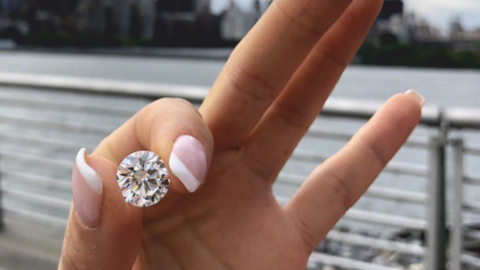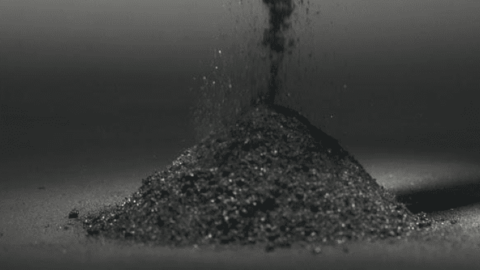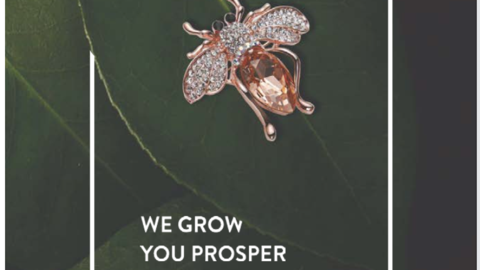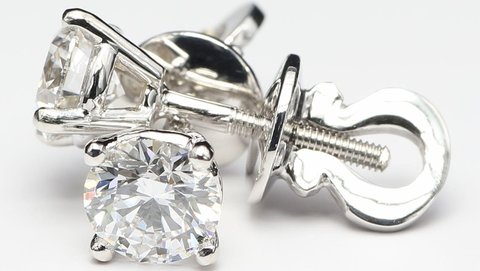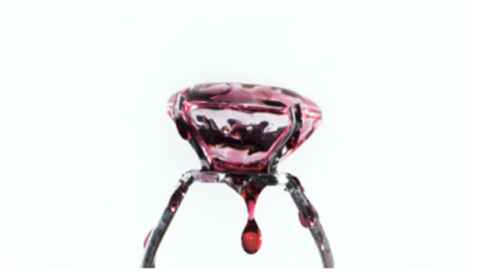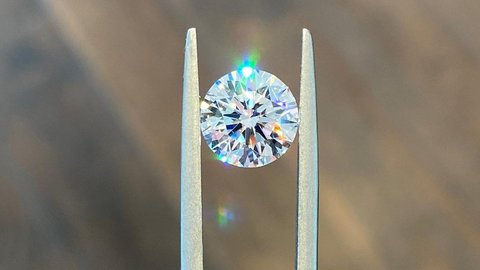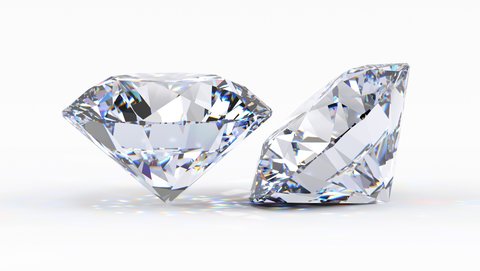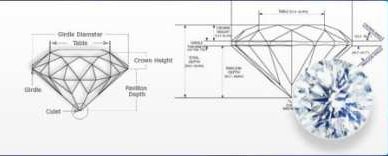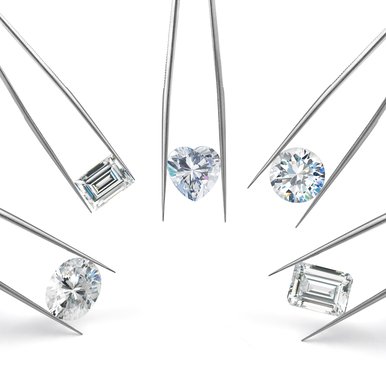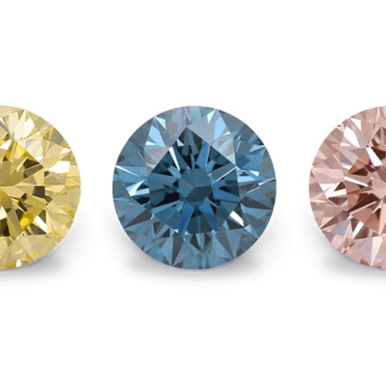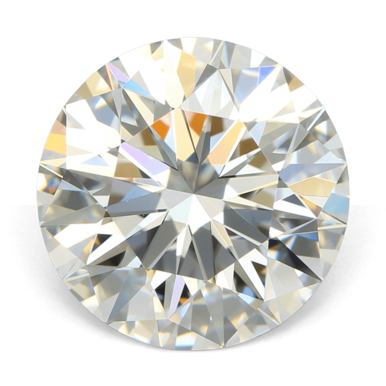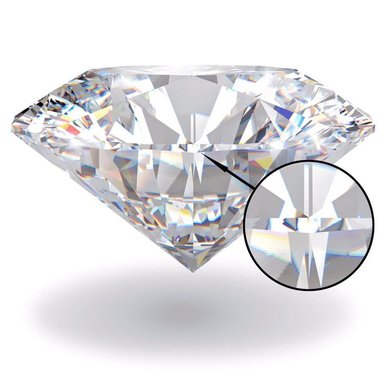How to Choose the Best Step Cut Lab Grown Diamonds (2025 Guide)
Author: Alex K., CMO at Labrilliante Updated: 2025-10-10 Reading Time: 8 minutes
Step cut lab grown diamonds require VS1+ clarity and G-H color grades due to their "hall of mirrors" architecture that amplifies inclusions. Lab-grown options offer 60-80% savings over natural diamonds while delivering superior clarity consistency through controlled HPHT and CVD growth processes, making luxury accessible without compromising geometric elegance.
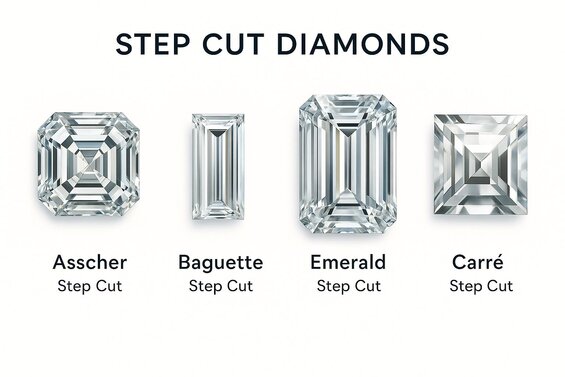
Modern couples are rejecting flashy brilliant cuts for sophisticated step cut diamonds that whisper luxury instead of shouting for attention. The architectural beauty of emerald and Asscher cuts has captured hearts seeking timeless elegance over trend-driven sparkle. But here's the challenge: step cuts demand higher clarity and color standards than brilliant cuts, traditionally making them expensive investments. This guide reveals how lab-grown step cut diamonds democratize luxury, delivering museum-quality gems at accessible prices while maintaining the geometric precision that makes these shapes eternally captivating.
The Resale Reality: Why Some Experts Still Recommend Natural Step Cuts
Jewelry appraisers and traditional dealers argue that lab-grown step cuts lack long-term value retention, particularly problematic given step cuts' already lower resale values compared to brilliant cuts. They contend that combining an emerging technology (lab growth) with a niche shape category creates double depreciation risk. Some high-end retailers refuse lab-grown step cuts entirely, claiming clients seeking architectural sophistication want "authentic" geological formation stories.
While resale concerns hold merit for pure investment purchases, they miss the fundamental shift in consumer priorities. Today's buyers prioritize immediate beauty and ethical sourcing over speculative future value. For engagement rings and heirloom pieces meant for wearing rather than trading, lab-grown step cuts deliver identical visual impact at fraction of the cost. The "value" equation changes when you're buying love, not commodities.
Master Step Cut Diamond Architecture and Optical Effects
Step cuts produce their signature "hall of mirrors" effect through parallel rectangular facets that reflect light like architectural mirrors. Unlike brilliant cuts that maximize sparkle, step cuts prioritize geometric precision and clarity transparency.
| Characteristic | Step Cut (Emerald/Asscher) | Brilliant Cut (Round/Princess) |
|---|---|---|
| Facet Structure | Parallel rectangular facets in steps | Triangular and kite-shaped facets |
| Light Performance | "Hall of mirrors" effect with geometric flashes | Maximum fire and scintillation |
| Facet Count | 50-74 facets | 57-76 facets |
| Table Percentage | 60-69% | 53-58% |
| Clarity Requirements | VS1 or higher recommended | VS2 or SI1 acceptable |
| Color Requirements | G color or higher (shows tints easily) | H-I color acceptable |
| Visual Effect | Architectural elegance, windmill pattern | Maximum brilliance and sparkle |
| Inclusion Visibility | High - open facet structure reveals flaws | Low - brilliant facets mask inclusions |
| Best For | Sophisticated, vintage-inspired designs | Traditional engagement rings, maximum sparkle |
| Lab-Grown Price (2ct, G VS1) | $1,200-$1,800 | $1,000-$1,500 |
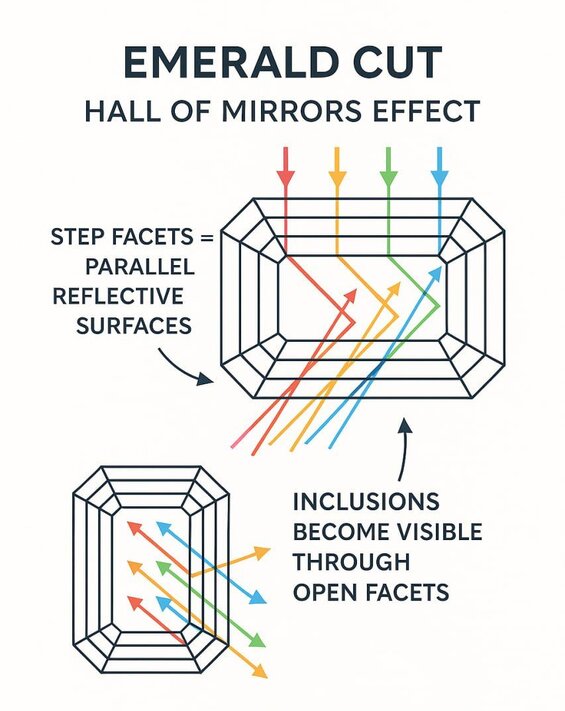
How Step Facets Create Hall of Mirrors
Light enters through the table and bounces between parallel step facets in precise geometric patterns. Each rectangular facet acts as a mirror, creating distinct reflection planes that differ dramatically from brilliant cut triangular facets.
This architectural design demands exceptional clarity. Why? Inclusions become highly visible within the open facet structure. The trade-off is reduced fire for stunning geometric elegance.
Table size directly impacts mirror intensity. Emerald cuts feature 61-69% tables, while Asscher cuts range 60-65%. Larger tables amplify the effect but reveal color tints in lower grades.
Emerald vs Asscher Cut Technical Differences
Emerald cuts use rectangular outlines with 50-58 facets and 1.30-1.50 length-to-width ratios. Asscher cuts feature square outlines with deeper cropped corners, creating octagonal shapes with 58-74 facets.
The key difference? Pavilion architecture. Asscher cuts have higher crowns and deeper pavilions, creating the distinctive "windmill appearance" - four dark lines radiating from the center when viewed through the table.
| Specification | Emerald Cut | Asscher Cut |
|---|---|---|
| Facet Count | 50-58 facets | 58-74 facets |
| Shape Outline | Rectangular | Square (octagonal) |
| Table Percentage | 61-69% | 60-65% |
| Crown Height | 11-16% | 14-18% |
| Pavilion Depth | 43-46% | 46-50% |
| Length-to-Width Ratio | 1.30-1.50 | 1.00-1.05 |
| Cropped Corners | Minimal | Deep (octagonal shape) |
| Light Performance | Elongated flashes | Shorter, intense flashes |
| Windmill Effect | None | Distinctive 4-line pattern |
| Minimum Clarity Grade | VS2 (lab-grown) | VS1 (lab-grown) |
| Ideal Hand Type | Narrow/slender fingers | Broader hands |
| Price Range (2ct lab-grown) | $1,200-$1,800 | $1,400-$2,000 |
Asscher cuts generate shorter, intense flashes due to square symmetry. Emerald cuts produce elongated flashes. This affects jewelry applications: emerald cuts suit finger lengthening, while Asscher cuts complement broader hands.
Decode Clarity Standards for Maximum Step Cut Brilliance
Step cuts demand VS1 clarity minimum because their open structure provides unobstructed views into the diamond interior. The parallel facets create "clarity windows" where inclusions become prominently visible.

Why VS1 Clarity Minimum Requirements Matter
VS1 represents the threshold where inclusions remain invisible to naked eyes in step cuts. Below VS1, the hall of mirrors effect actually amplifies inclusion visibility rather than masking it like brilliant cuts do.
VS2 becomes acceptable below 1.5 carats where size naturally reduces inclusion visibility. Above 2 carats? VS2 inclusions often become eye-visible, particularly near the table center. SI1 should be avoided regardless of size.
The clarity requirement intensifies in emerald cuts with ratios exceeding 1.45:1. Elongated shapes create larger clarity windows. Conversely, Asscher cuts sometimes tolerate VS2 due to shorter diagonal sight lines.
G-H Color Grades Optimal Performance Range
G-H color provides the sweet spot between colorlessness and value in step cuts. The large table and open structure make step cuts more color-sensitive than brilliant cuts - fewer facets mean less color dispersion.
G color appears colorless in step cuts above 1.5 carats when set in white metals. H color works effectively below 1.5 carats or in yellow gold settings where metal tone complements the slight warmth.
2-Carat Emerald Cut Color Comparison
A client was selecting between G ($18,500), H ($16,200), and I ($14,800) color grades in identical 2-carat emerald cuts for a yellow gold engagement ring. The G color represented a $2,300 premium over H grade, while the client was concerned about visible color differences in the large table of the emerald cut.
We conducted a side-by-side comparison of all three stones in identical yellow gold settings under both jewelry store lighting and natural daylight. The emerald cut's open facet structure was evaluated specifically for color visibility through the table and step facets.
The client achieved 15% cost savings ($2,300) by selecting H color with zero detectable visual difference from G color when mounted in yellow gold. The I color showed noticeable warmth through the table, confirming H as the optimal value point. The yellow gold setting effectively masked the subtle warmth in H color, delivering identical visual performance to G grade at significant savings.
I color becomes problematic, especially in elongated emerald cuts where the extended table amplifies yellow tint. Choosing H over G saves 10-15% while maintaining visual appeal in appropriate settings.
Compare Step Cut Shapes for Your Perfect Match
Each step cut shape offers distinct aesthetics suited to different preferences and hand types. Emerald cuts dominate with approximately 70% market share, while Asscher cuts appeal to vintage enthusiasts seeking Art Deco sophistication.
| Step Cut Shape | Best Hand Types | Style Preference | Ideal Length-to-Width Ratio | Recommended Carat Weight | Clarity Grade Needed | Lab-Grown Price Range (per carat) |
|---|---|---|---|---|---|---|
| Emerald Cut | Narrow fingers, shorter hands | Classic elegant, modern minimalist | 1.40:1 - 1.50:1 | 1.5 - 3.0 carats | VS1 or higher | $700 - $1,200 |
| Asscher Cut | Broader hands, longer fingers | Vintage Art Deco, geometric precision | 1.00:1 - 1.05:1 | 1.0 - 2.5 carats | VS2 or higher | $650 - $1,100 |
| Baguette Cut (Center Stone) | Long, slender fingers | Ultra-modern, architectural | 2.00:1 - 3.00:1 | 0.8 - 2.0 carats | VVS2 or higher | $800 - $1,400 |
| Elongated Emerald | Short, wide fingers | Dramatic statement, contemporary | 1.60:1 - 1.80:1 | 2.0 - 4.0 carats | VS1 or higher | $850 - $1,350 |
| Square Emerald | Most hand types, versatile | Balanced classic, understated luxury | 1.25:1 - 1.35:1 | 1.0 - 2.5 carats | VS2 or higher | $650 - $1,150 |
| East-West Emerald | Any hand type, unique orientation | Trendy geometric, fashion-forward | 1.40:1 - 1.60:1 | 1.5 - 3.5 carats | VS1 or higher | $750 - $1,250 |
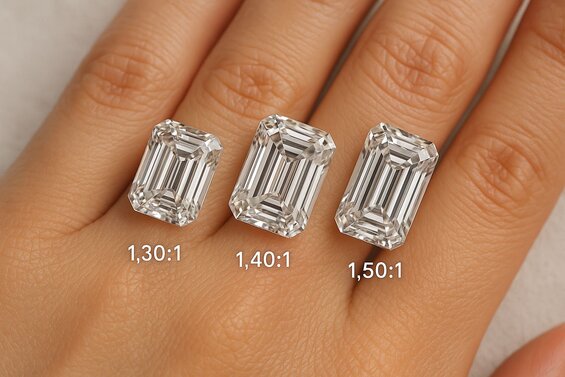
Emerald cuts excel at finger lengthening due to rectangular outlines. Classic 1.40:1 ratios provide balanced proportions, while 1.50:1 creates dramatic elongation. Narrower 1.30:1 ratios maintain rectangular elegance without approaching square territory.
Asscher cuts offer vintage charm with octagonal outlines and windmill patterns. They create compact presence, suiting broader hands or those preferring geometric precision over elongation.
Baguette cuts serve primarily as accent stones with 2:1 to 4:1 length-to-width ratios. These dramatic linear shapes require exceptional clarity - often VVS grades - due to extreme elongation amplifying internal characteristics.
East-west orientation mounting has gained popularity in 2025, creating horizontal presentations that complement modern geometric jewelry while reducing color and clarity visibility.
Evaluate Lab-Grown Step Cut Quality and Certification Standards
Lab-grown step cuts benefit from controlled growing conditions that produce superior clarity consistency compared to natural diamonds. IGI certification leads the lab-grown market, with GIA and GCAL providing additional premium verification.
HPHT growth typically produces fewer inclusions but may show subtle color zoning visible in finished step cuts. CVD growth offers exceptional clarity control through layer-by-layer formation, allowing adjustments if inclusions begin forming during growth.
"In evaluating lab-grown step cut diamonds, its critical to understand the nuanced impact of growth methods on the final product. HPHT typically results in fewer inclusions, making it invaluable for achieving higher clarity grades. However, this method can introduce subtle color zoning which becomes particularly noticeable in step cuts due to their open and transparent facet structure. On the other hand, CVD growth, while offering superior control over clarity, requires meticulous monitoring to adjust growth conditions and prevent inclusions, especially critical in the creation of larger stones where even minor imperfections are magnified. It’s these precise growth manipulations that set apart premium lab-grown diamonds in the market, underscoring the need for a discerning eye during the certification process."
The certification process for step cuts requires specialized attention to cut quality factors. Polish and symmetry grades become critical - geometric precision reveals cutting imperfections that brilliant cuts might hide. Excellent polish is essential, while very good symmetry represents minimum acceptable standards.
Step cuts show higher sensitivity to cutting precision than brilliant cuts. Poor symmetry becomes immediately apparent in the geometric facet arrangement, making expert cutting crucial for optimal performance.
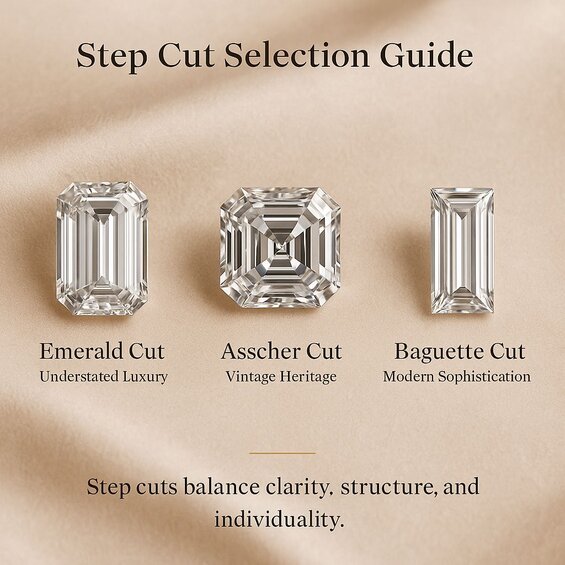
Select Your Step Cut Based on Style and Investment Goals
Step cut selection should balance aesthetic preferences with practical considerations including hand type, setting compatibility, and satisfaction factors. Art Deco revival trends in 2025 have elevated step cut popularity among buyers seeking sophisticated elegance over flashy brilliance.
Emerald cuts suit buyers prioritizing understated luxury and elongating effects. Clean lines complement minimalist aesthetics while providing substantial visual presence per carat. Standard 1.40:1 ratios typically maintain broader appeal than extreme elongations.
Asscher cuts appeal to vintage enthusiasts preferring compact, architectural presentations. The Art Deco heritage creates emotional connection for buyers drawn to historical jewelry design.
Size optimization differs from brilliant cuts due to efficiency in appearing larger per carat weight. A 2-carat emerald cut can appear equivalent to a 2.5-carat brilliant cut due to larger table and elongated outline, providing value advantages for maximum visual impact.
Setting considerations impact performance significantly. Prong placement must avoid corner interference where chipping risk peaks, while bezel settings protect corners but may reduce hall of mirrors visibility that makes step cuts distinctive.
Frequently Asked Questions
Step cut diamonds require higher clarity grades (VS1 minimum) and better color grades (G-H range) because their "hall of mirrors" facet structure makes inclusions and color tints more visible than in brilliant cuts. This demand for premium quality grades traditionally made them more expensive investments.
Lab grown step cut diamonds are optically identical to natural ones, producing the same "hall of mirrors" effect and geometric elegance. They actually often have superior clarity consistency due to controlled HPHT and CVD growth processes, making them ideal for step cuts that demand exceptional clarity.
Emerald cuts feature rectangular shapes that elongate fingers and suit most hand types, while Asscher cuts offer square, Art Deco-inspired designs that complement broader hands. Emerald cuts dominate with 70% market share, but choice depends on your style preference and hand shape.
Step cuts use parallel rectangular facets that act like architectural mirrors, creating unobstructed views into the diamond's interior. Unlike brilliant cuts with triangular facets that can mask inclusions, step cuts' open structure provides "clarity windows" that make internal characteristics highly visible.
Lab grown step cut diamonds have limited resale value compared to natural diamonds, which some experts cite as a concern. However, this matters less for engagement rings and heirloom pieces meant for wearing rather than trading, where immediate beauty and ethical sourcing outweigh speculative investment value.
G-H color grades provide the optimal balance of appearance and value in step cut lab diamonds. G color appears colorless above 1.5 carats in white metals, while H color works well below 1.5 carats or in yellow gold settings, offering 10-15% savings with minimal visual difference.
Step cut corners are vulnerable to chipping and require careful setting design. Prong placement must avoid corner interference, while bezel settings offer maximum protection but may slightly reduce the hall of mirrors visibility that makes step cuts distinctive.
Step cuts appear larger per carat than brilliant cuts due to their elongated outlines and larger tables. A 2-carat step cut can look equivalent to a 2.5-carat brilliant cut, making them excellent for maximizing visual impact while VS2 clarity becomes acceptable below 1.5 carats due to natural size reduction of inclusion visibility.


